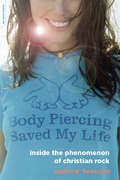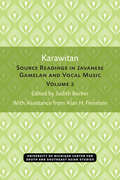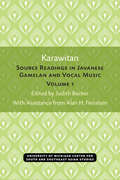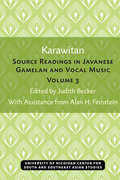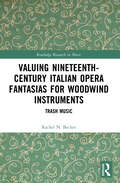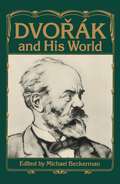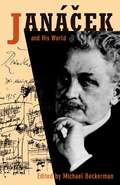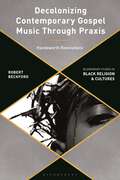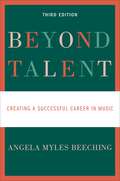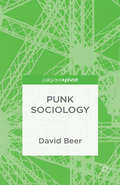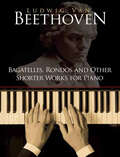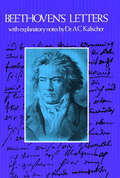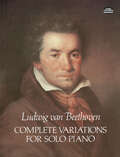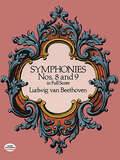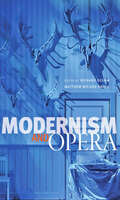- Table View
- List View
Body Piercing Saved My Life: Inside the Phenomenon of Christian Rock
by Andrew BeaujonBody Piercing Saved My Life is the first in-depth journalistic investigation into a subculture so large that it's erroneous to even call it a subculture: Christian rock. Christian rock culture is booming, not only with bands but with extreme teen Bibles, skateboarding ministries, Christian tattoo parlors, paintball parks, coffeehouses, and nightclubs,encouraging kids to form their own communities apart from the mainstream. Profiling such successful Christian rock bands as P.O.D., Switchfoot, Creed, Evanescence, and Sixpence None the Richer, as well as the phenomenally successful Seattle Christian record label Tooth & Nail, enormous Christian rock festivals, and more, Spin journalist Andrew Beaujon lifts the veil on a thriving scene that operates beneath the secular world's radar. Revealing, sympathetic, and groundbreaking, Body Piercing Saved My Life (named for a popular Christian rock T-shirt depicting Christ's wounds) is a fascinating look into the hearts and minds of an enormous, and growing, youth culture.
Body Piercing Saved My Life: Inside the Phenomenon of Christian Rock
by Andrew BeaujonBody Piercing Saved My Life is the first in-depth journalistic investigation into a subculture so large that it's erroneous to even call it a subculture: Christian rock. Christian rock culture is booming, not only with bands but with extreme teen Bibles, skateboarding ministries, Christian tattoo parlors, paintball parks, coffeehouses, and nightclubs,encouraging kids to form their own communities apart from the mainstream. Profiling such successful Christian rock bands as P.O.D., Switchfoot, Creed, Evanescence, and Sixpence None the Richer, as well as the phenomenally successful Seattle Christian record label Tooth & Nail, enormous Christian rock festivals, and more, Spin journalist Andrew Beaujon lifts the veil on a thriving scene that operates beneath the secular world's radar. Revealing, sympathetic, and groundbreaking, Body Piercing Saved My Life (named for a popular Christian rock T-shirt depicting Christ's wounds) is a fascinating look into the hearts and minds of an enormous, and growing, youth culture.
Preachin' the Blues: The Life and Times of Son House
by Daniel BeaumontIn June of 1964, three young, white blues fans set out from New York City in a Volkswagen, heading for the Mississippi Delta in search of a musical legend. So begins Preachin' the Blues, the biography of American blues signer and guitarist Eddie James "Son" House, Jr. (1902 - 1988). House pioneered an innovative style, incorporating strong repetitive rhythms with elements of southern gospel and spiritual vocals. A seminal figure in the history of the Delta blues, he was an important, direct influence on such figures as Muddy Waters and Robert Johnson. The landscape of Son House's life and the vicissitudes he endured make for an absorbing narrative, threaded through with a tension between House's religious beliefs and his spells of commitment to a lifestyle that implicitly rejected it. Drinking, womanizing, and singing the blues caused this tension that is palpable in his music, and becomes explicit in one of his finest performances, "Preachin' the Blues." Large parts of House's life are obscure, not least because his own accounts of them were inconsistent. Author Daniel Beaumont offers a chronology/topography of House's youth, taking into account evidence that conflicts sharply with the well-worn fable, and he illuminates the obscurity of House's two decades in Rochester, NY between his departure from Mississippi in the 1940s and his "rediscovery" by members of the Folk Revival Movement in 1964. Beaumont gives a detailed and perceptive account of House's primary musical legacy: his recordings for Paramount in 1930 and for the Library of Congress in 1941-42. In the course of his research Beaumont has unearthed not only connections among the many scattered facts and fictions but new information about a rumoured murder in Mississippi, and a charge of manslaughter on Long Island - incidents which bring tragic light upon House's lifelong struggles and self-imposed disappearance, and give trenchant meaning to the moving music of this early blues legend.
Preachin' the Blues: The Life and Times of Son House
by Daniel BeaumontIn June of 1964, three young, white blues fans set out from New York City in a Volkswagen, heading for the Mississippi Delta in search of a musical legend. So begins Preachin' the Blues, the biography of American blues signer and guitarist Eddie James "Son" House, Jr. (1902 - 1988). House pioneered an innovative style, incorporating strong repetitive rhythms with elements of southern gospel and spiritual vocals. A seminal figure in the history of the Delta blues, he was an important, direct influence on such figures as Muddy Waters and Robert Johnson. The landscape of Son House's life and the vicissitudes he endured make for an absorbing narrative, threaded through with a tension between House's religious beliefs and his spells of commitment to a lifestyle that implicitly rejected it. Drinking, womanizing, and singing the blues caused this tension that is palpable in his music, and becomes explicit in one of his finest performances, "Preachin' the Blues." Large parts of House's life are obscure, not least because his own accounts of them were inconsistent. Author Daniel Beaumont offers a chronology/topography of House's youth, taking into account evidence that conflicts sharply with the well-worn fable, and he illuminates the obscurity of House's two decades in Rochester, NY between his departure from Mississippi in the 1940s and his "rediscovery" by members of the Folk Revival Movement in 1964. Beaumont gives a detailed and perceptive account of House's primary musical legacy: his recordings for Paramount in 1930 and for the Library of Congress in 1941-42. In the course of his research Beaumont has unearthed not only connections among the many scattered facts and fictions but new information about a rumoured murder in Mississippi, and a charge of manslaughter on Long Island - incidents which bring tragic light upon House's lifelong struggles and self-imposed disappearance, and give trenchant meaning to the moving music of this early blues legend.
Karawitan: Source Readings in Javanese Gamelan and Vocal Music, Volume 2 (Michigan Papers On South And Southeast Asia #30)
by Judith BeckerThe twentieth century has spawned a great interest in Indonesian music, and now books, articles, and manuscripts can be found that expound exclusively about karawitan (the combined vocal and instrumental music of the gamelan). Scholar Judith Becker has culled several key sources on karawitan into three volumes and has translated them for the benefit of the Western student of the gamelan tradition. The texts in her collection were written over a forty-five-year time period (ca 1930–1975) and include articles by Martopangrawit, Sumarsam, Sastrapustaka, Gitosaprodjo, Sindoesawarno, Poerbapangrawit, Probohardjono, Warsadiningrat, Purbodiningrat, Poerbatjaraka, and Paku Buwana X. The final volume also contains a glossary of technical terms, an appendix of the Javanese cipher notations (titilaras kepatihan), a biographical listing, and an index to the musical pieces (Gendhing).
Karawitan: Source Readings in Javanese Gamelan and Vocal Music, Volume 1 (Michigan Papers On South And Southeast Asia #23)
by Judith BeckerThe twentieth century has spawned a great interest in Indonesian music, and now books, articles, and manuscripts can be found that expound exclusively about karawitan (the combined vocal and instrumental music of the gamelan). Scholar Judith Becker has culled several key sources on karawitan into three volumes and has translated them for the benefit of the Western student of the gamelan tradition. The texts in her collection were written over a forty-five-year time period (ca 1930–1975) and include articles by Martopangrawit, Sumarsam, Sastrapustaka, Gitosaprodjo, Sindoesawarno, Poerbapangrawit, Probohardjono, Warsadiningrat, Purbodiningrat, Poerbatjaraka, and Paku Buwana X. The final volume also contains a glossary of technical terms, an appendix of the Javanese cipher notations (titilaras kepatihan), a biographical listing, and an index to the musical pieces (Gendhing).
Karawitan: Source Readings in Javanese Gamelan and Vocal Music, Volume 3 (Michigan Papers On South And Southeast Asia #31)
by Judith BeckerThe twentieth century has spawned a great interest in Indonesian music, and now books, articles, and manuscripts can be found that expound exclusively about karawitan (the combined vocal and instrumental music of the gamelan). Scholar Judith Becker has culled several key sources on karawitan into three volumes and has translated them for the benefit of the Western student of the gamelan tradition. The texts in her collection were written over a forty-five-year time period (ca 1930–1975) and include articles by Martopangrawit, Sumarsam, Sastrapustaka, Gitosaprodjo, Sindoesawarno, Poerbapangrawit, Probohardjono, Warsadiningrat, Purbodiningrat, Poerbatjaraka, and Paku Buwana X. The final volume also contains a glossary of technical terms, an appendix of the Javanese cipher notations (titilaras kepatihan), a biographical listing, and an index to the musical pieces (Gendhing).
Valuing Nineteenth-Century Italian Opera Fantasias for Woodwind Instruments: Trash Music (Routledge Research in Music)
by Rachel N. BeckerThis book approaches opera fantasias – instrumental works that use themes from a single opera as the body of their virtuosic and flamboyant material – both historically and theoretically, concentrating on compositions for and by woodwind-instrument performers in Italy in the nineteenth century.Important overlapping strands include the concept of virtuosity and its gradual demonization, the strong gendered overtones of individual woodwind instruments and of virtuosity, the distinct Italian context of these fantasias, the presentation and alteration of opera narratives in opera fantasias, and the technical and social development of woodwind instruments. Like opera itself, the opera fantasia is a popular art form, stylistically predictable yet formally flexible, based heavily on past operatic tradition and prefabricated materials. Through archival research in Italy, theoretical analysis, and exploration of European cultural contexts, this book clarifies a genre that has been consciously stifled and societal resonances that still impact music reception and performance today.
Valuing Nineteenth-Century Italian Opera Fantasias for Woodwind Instruments: Trash Music (Routledge Research in Music)
by Rachel N. BeckerThis book approaches opera fantasias – instrumental works that use themes from a single opera as the body of their virtuosic and flamboyant material – both historically and theoretically, concentrating on compositions for and by woodwind-instrument performers in Italy in the nineteenth century.Important overlapping strands include the concept of virtuosity and its gradual demonization, the strong gendered overtones of individual woodwind instruments and of virtuosity, the distinct Italian context of these fantasias, the presentation and alteration of opera narratives in opera fantasias, and the technical and social development of woodwind instruments. Like opera itself, the opera fantasia is a popular art form, stylistically predictable yet formally flexible, based heavily on past operatic tradition and prefabricated materials. Through archival research in Italy, theoretical analysis, and exploration of European cultural contexts, this book clarifies a genre that has been consciously stifled and societal resonances that still impact music reception and performance today.
Dvorák and His World (The Bard Music Festival #31)
by Michael BeckermanAntonin Dvorák made his famous trip to the United States one hundred years ago, but despite an enormous amount of attention from scholars and critics since that time, he remains an elusive figure. Comprising both interpretive essays and a selection of fascinating documents that bear on Dvorák's career and music, this volume addresses fundamental questions about the composer while presenting an argument for a radical reappraisal. The essays, which make up the first part of the book, begin with Leon Botstein's inquiry into the reception of Dvorák's work in German-speaking Europe, in England, and in America. Commenting on the relationship between Dvorák and Brahms, David Beveridge offers the first detailed portrait of perhaps the most interesting artistic friendship of the era. Joseph Horowitz explores the context in which the "New World" Symphony was premiered a century ago, offering an absorbing account of New York musical life at that time. In discussing Dvorák as a composer of operas, Jan Smaczny provides an unexpected slant on the widely held view of him as a "nationalist" composer. Michael Beckerman further investigates this view of Dvorák by raising the question of the role nationalism played in music of the nineteenth century. The second part of this volume presents Dvorák's correspondence and reminiscences as well as unpublished reviews and criticism from the Czech press. It includes a series of documents from the composer's American years, a translation of the review of Rusalka's premiere with the photographs that accompanied the article, and Janácek's analyses of the symphonic poems. Many of these documents are published in English for the first time.
Dvorák and His World (PDF)
by Michael BeckermanAntonin Dvorák made his famous trip to the United States one hundred years ago, but despite an enormous amount of attention from scholars and critics since that time, he remains an elusive figure. Comprising both interpretive essays and a selection of fascinating documents that bear on Dvorák's career and music, this volume addresses fundamental questions about the composer while presenting an argument for a radical reappraisal. The essays, which make up the first part of the book, begin with Leon Botstein's inquiry into the reception of Dvorák's work in German-speaking Europe, in England, and in America. Commenting on the relationship between Dvorák and Brahms, David Beveridge offers the first detailed portrait of perhaps the most interesting artistic friendship of the era. Joseph Horowitz explores the context in which the "New World" Symphony was premiered a century ago, offering an absorbing account of New York musical life at that time. In discussing Dvorák as a composer of operas, Jan Smaczny provides an unexpected slant on the widely held view of him as a "nationalist" composer. Michael Beckerman further investigates this view of Dvorák by raising the question of the role nationalism played in music of the nineteenth century. The second part of this volume presents Dvorák's correspondence and reminiscences as well as unpublished reviews and criticism from the Czech press. It includes a series of documents from the composer's American years, a translation of the review of Rusalka's premiere with the photographs that accompanied the article, and Janácek's analyses of the symphonic poems. Many of these documents are published in English for the first time.
Janácek and His World
by Michael BeckermanOnce thought to be a provincial composer of only passing interest to eccentrics, Leos Janácek (1854-1928) is now widely acknowledged as one of the most powerful and original creative figures of his time. Banned for all purposes from the Prague stage until the age of 62, and unable to make it even out of the provincial capital of Brno, his operas are now performed in dynamic productions throughout the globe. This volume brings together some of the world's foremost Janácek scholars to look closely at a broad range of issues surrounding his life and work. Representing the latest in Janácek scholarship, the essays are accompanied by newly translated writings by the composer himself. The collection opens with an essay by Leon Botstein who clarifies and amplifies how Max Brod contributed to Janácek 's international success by serving as "point man" between Czechs and Germans, Jews and non-Jews. John Tyrrell, the dean of Janácek scholars, distills more than thirty years of research in "How Janácek Composed Operas," while Diane Paige considers Janácek's liason with a married woman and the question of the artist's muse. Geoffrey Chew places the idea of the adulterous muse in the larger context of Czech fin de siècle decadence in his thoroughgoing consideration of Janácek's problematic opera Osud. Derek Katz examines the problems encountered by Janácek's satirically patriotic "Excursions of Mr. Broucek" in the post-World War I era of Czechoslovak nationalism, while Paul Wingfield mounts a defense of Janácek against allegations of cruelty in his wife's memoirs. In the final essay, Michael Beckerman asks how much true history can be culled from one of Janácek's business cards. The book then turns to writings by Janácek previously unpublished in English. These not only include fascinating essays on Naturalism, opera direction, and Tristan and Isolde, but four impressionistic chronicles of the "speech melodies" of daily life. They provide insight into Janácek's revolutionary method of composition, and give us the closest thing we will ever have to the "heard" record of a Czech pre-war past-or any past, for that matter.
Decolonizing Contemporary Gospel Music Through Praxis: Handsworth Revolutions (Bloomsbury Studies in Black Religion and Cultures)
by Mr Robert BeckfordIs contemporary Black British gospel music a coloniality? What theological message is really conveyed in these songs?In this book, Robert Beckford shows how the Black British contemporary gospel music tradition is incrisis because its songs continue to be informed by colonial Christian ideas about God.Beckford explores the failure of both African and African Caribbean heritage Churches to Decolonise their faith, especially the doctrine of God, biblical interpretation and Black ontology. This predicament has left song leaders, musicians and songwriters with a reservoir of ideas that aim to disavow engagement with the social-historical world, black Biblical interpretation and the necessity of loving blackness.This book is decolonisation through praxis. Reflecting on the conceptual social justice album 'The Jamaican Bible Remix' (2017) as a communicative resource, Beckford shows how to develop production tools to inscribe decolonial theological thought onto Black British music(s). The outcome of this process is the creation of a decolonial contemporary gospel music genre. The impact of the album is demonstrated through case studies in national and international contexts.
Decolonizing Contemporary Gospel Music Through Praxis: Handsworth Revolutions (Bloomsbury Studies in Black Religion and Cultures)
by Mr Robert BeckfordIs contemporary Black British gospel music a coloniality? What theological message is really conveyed in these songs?In this book, Robert Beckford shows how the Black British contemporary gospel music tradition is incrisis because its songs continue to be informed by colonial Christian ideas about God.Beckford explores the failure of both African and African Caribbean heritage Churches to Decolonise their faith, especially the doctrine of God, biblical interpretation and Black ontology. This predicament has left song leaders, musicians and songwriters with a reservoir of ideas that aim to disavow engagement with the social-historical world, black Biblical interpretation and the necessity of loving blackness.This book is decolonisation through praxis. Reflecting on the conceptual social justice album 'The Jamaican Bible Remix' (2017) as a communicative resource, Beckford shows how to develop production tools to inscribe decolonial theological thought onto Black British music(s). The outcome of this process is the creation of a decolonial contemporary gospel music genre. The impact of the album is demonstrated through case studies in national and international contexts.
Beyond Talent: Creating a Successful Career in Music
by Angela Myles BeechingWidely considered a classic, Beyond Talent is the "go to" guide for musicians. This newly revised and updated third edition cracks the code of how to build a creatively fulfilling career in music. With key insights into the mindset issues that often plague musicians, veteran career coach Angela Myles Beeching provides a wealth of strategies, examples, and real-world solutions. Step-by-step instructions detail how to design promotional materials, book performances, fund your projects, and cultivate a community of support so you can manage your career like a pro-without losing your soul. And this edition goes further: it unpacks how to deal head on with the typical "inner" challenges musicians face. From getting past perfectionism and fear, to sustaining motivation, finding your artistic voice, managing projects, time, and money, and setting achievable goals. With her straight-shooting, energizing approach, Beeching presents a wealth of practical solutions to help musicians take charge of their careers and get past the obstacles that have held them back. Whether you're an emerging artist or a mid-career professional, this edition offers the inspiration to transform your music career journey so you can get more of your best work out into the world and finally become the artist you are meant to be. Includes a free downloadable companion workbook.
Beyond Talent: Creating a Successful Career in Music
by Angela Myles BeechingWidely considered a classic, Beyond Talent is the "go to" guide for musicians. This newly revised and updated third edition cracks the code of how to build a creatively fulfilling career in music. With key insights into the mindset issues that often plague musicians, veteran career coach Angela Myles Beeching provides a wealth of strategies, examples, and real-world solutions. Step-by-step instructions detail how to design promotional materials, book performances, fund your projects, and cultivate a community of support so you can manage your career like a pro-without losing your soul. And this edition goes further: it unpacks how to deal head on with the typical "inner" challenges musicians face. From getting past perfectionism and fear, to sustaining motivation, finding your artistic voice, managing projects, time, and money, and setting achievable goals. With her straight-shooting, energizing approach, Beeching presents a wealth of practical solutions to help musicians take charge of their careers and get past the obstacles that have held them back. Whether you're an emerging artist or a mid-career professional, this edition offers the inspiration to transform your music career journey so you can get more of your best work out into the world and finally become the artist you are meant to be. Includes a free downloadable companion workbook.
Punk Sociology
by D. BeerThis book explores the possibility of drawing upon a punk ethos to inspire and invigorate sociology. It uses punk to think creatively about what sociology is and how it might be conducted and aims to fire the sociological imaginations of sociologists at any stage of their careers, from new students to established professors.
The Half of It: A Memoir
by Madison BeerDiscovered at twelve years old, Madison Beer was one of the first artists to have her entire life documented online. Over the past decade, she has navigated the spotlight as a child, through her teenage years, and now as a young woman in her twenties.In The Half of It, Madison pulls back the curtain to show the behind-the-scenes of her journey, from reckoning with mass hate online and the time her private pictures were leaked, to battling suicidal thoughts while making her highly acclaimed debut album, Life Support, and her recovery since then. This memoir is an honest and unflinching account of self-love, mental health, and advocacy from one of the fastest-rising musical voices and most influential social media presences of her generation. It hammers home the point, more striking and urgent than ever, that no matter how close the internet may make us feel to people, we truly don't know the half of it.
Piano Sonata no. 8 "Pathetique" First movement, skeleton score (PDF)
by BeethovenThis is a musical score in Modified Stave Notation. The original file is available as .mscz format and the braille music version as .brf from mas@rnib.org.uk
Bagatelles, Rondos and Other Shorter Works for Piano
by Ludwig Van BeethovenUniversally recognized for his critically important role in raising instrumental music to its highest plane, Beethoven is also highly regarded for his leadership in developing and extending the piano repertoire. His bagatelles, once described by the composer himself as "Kleinigkeiten" -- or "trifles" -- are short, masterful works that have proved tremendously popular not only for their pleasing sounds but also for the technical challenges they offer intermediate as well as advanced piano students.This superb, high-quality collection, reproduced from the authoritative Breitkopf & Härtel edition, contains the composer's most popular and most performed bagatelles, rondos, and shorter compositions, including: Six Minuets (c. 1795); the Polonaise in C, Op. 89 (1814); Six Bagatelles, Op. 126 (1823-24); the famed Rondo a capriccio in G (Rage Over a Lost Penny, 1795); the Andante in F (Andante favori, 1803), and a generous selection of other short works. An easily affordable volume, the present edition provides Beethoven devotees, students, teachers, and music lovers with a delightful sampling of a number of spirited works by one of the music world's supreme masters.
Beethoven's Letters
by Ludwig Van BeethovenLudwig van Beethoven (1770-1827), the protagonist of freedom for music, disentangled music from the control of the ruling class. In publishing his music and writing for the rising classes, Beethoven claimed freedom and expressed the emotions of the new rulers, the artists. The Eroica, Fidelio, and the piano works express the emotions of the new rulers -- the intense love, the need for companionship of people, the forces that conspired to defeat the artist, and the strength and superiority of the artist in overcoming the weaknesses. The letters of Beethoven are the principal nonmusical expression of his personality in its relationship with the world of his time.In what he called the "dry letters of the alphabet," Beethoven depicted his fears, his loves, and his friendly relations: his fears of deafness and of corrupted texts by pirating printers; his loves, Bettina Brentano and Giulietta Guicciardi; and his friendly relations with Baron Zmeskall, Frau Nannette Streicher, and the music publishers Steiner and Company. He praises the poetry of Goethe and Schiller but condemns Goethe for his obeisance toward royalty. He solicits help during his perpetual trouble with his health and with his servants. He castigates publishers, sets prices for his works, and calculates letters of dedication. He expresses his love for his nephew, Carl, but documents the trouble that Carl was causing him by taking up his precious time. And although Beethoven liked to decorate the letters with musical openings and closings and an occasional song to the receiver, he increasingly signed his letters, "In haste."The 457 letters collected here are the most important of the letters of the spirit that was to shape and move a century. Explanatory notes comment upon works, on persons mentioned, and on the puns of which Beethoven was fond. The letters chronicle his business, his needs, his humor and bitterness, and his philosophy. They will give many insights into Beethoven's methods, his influences, his moods, and the conditions under which the master worked.
Complete Variations for Solo Piano
by Ludwig Van BeethovenThe piano music of Beethoven is an indispensable part of the repertoire of any serious pianist. Especially appealing are the variations, magnificent compositions second only to the sonatas and concertos in importance, and among the most recorded and performed music in the piano literature.This volume contains all 21 sets of Beethoven's solo piano variations, including the extremely popular Diabelli Variations, Op. 120, which, in the view of many critics, accomplished for the piano what Bach's Goldberg Variations did for the harpsichord. Also included are the perennially admired Thirty-two Variations in C Minor, the Eroica Variations, Op. 35, and a treasury of variations on themes by Dressler, Salieri, Süssmayr, Righini, and other composers.Reprinted from the authoritative Breitkopf & Härtel edition, this music manifests the prodigious invention and imagination the master brought to the variation form. Now the complete corpus of variations is available in this inexpensive reliable edition, ready to inspire and challenge pianists and music lovers.
Symphonies Nos. 8 and 9: In Full Score
by Ludwig Van BeethovenBeethoven's symphonies are among his greatest works -- in the opinion of many, the greatest orchestral compositions in the history of music. Perfect in their fusion of emotion and form, filled with drama and great beauty, they are among the best-known and best-loved works in all classical music. This volume contains complete scores for Symphony No. 8 in F Major, Op. 93, and Symphony No. 9 in D Minor, Op. 125.The eighth is full of beauty and innocent merriment, while the ninth is Beethoven's best and greatest symphony, a dazzling end to his symphonic works. Also included here is a translation of the passage from Schiller's ode "To Joy," featured in the last movement. Meticulously reproduced from the authoritative Litolff edition, each score features large, clear noteheads and wide margins for ease of use in studying and following the music. Far less expensive than comparable full-score editions, this volume belongs in the library of any music lover who wishes to study the masterly innovation and creativity Beethoven brought to the symphonic form.
Modernism and Opera (Hopkins Studies in Modernism)
by Richard Begam Matthew Wilson SmithAt first glance, modernism and opera may seem like strange bedfellows;¢;‚¬;€?the former hostile to sentiment, the latter wearing its heart on its sleeve. And yet these apparent opposites attract: many operas are aesthetically avant-garde, politically subversive, and socially transgressive. From the proto-modernist strains of Richard Wagner;€™s Parsifal through the twenty-first-century modernism of Kaija Saariaho;€™s L;€™amour de loin, the duet between modernism and opera, at turns harmonious and dissonant, has been one of the central artistic events of modernity. Despite this centrality, scholars of modernist literature only rarely venture into opera, and music scholars generally return the favor by leaving literature to one side. But opera, that grand cauldron of the arts, demands that scholars, too, share the stage with one another.In Modernism and Opera, Richard Begam and Matthew Wilson Smith bring together musicologists, literary critics, and theater scholars for the first time in a mutual endeavor to trace certain key moments in the history of modernism and opera. This innovative volume includes essays from some of the most notable scholars in their fields and covers works as diverse as Debussy;€™s Pell;©as et M;©lisande, Bart;³k;€™s Bluebeard;€™s Castle, Berg;€™s Wozzeck, Jan;¡cek;€™s Makropulos Case, Thomson;€™s Four Saints in Three Acts, Strauss;€™s Arabella, Schoenberg;€™s Moses und Aron, Stravinsky;€™s The Rake;€™s Progress, Britten;€™s Gloriana, and Messiaen;€™s Saint Fran;§ois d;€™Assise. A collaborative study of the ultimate collaborative art form, Modernism and Opera reveals how modernism and opera illuminate each other and, more generally, the culture of the twentieth century. It also addresses a number of issues crucial for understanding the relation between modernism and opera, focusing in particular on intermediality (how modernism integrates music, literature, and drama into opera) and anti-theatricality (how opera responds to modernism;€™s apparent antipathy to theatricality). This captivating book;¢;‚¬;€?the first of its kind;¢;‚¬;€?will appeal to scholars of literature, music, theater, and modernity as well as to sophisticated opera lovers everywhere.
